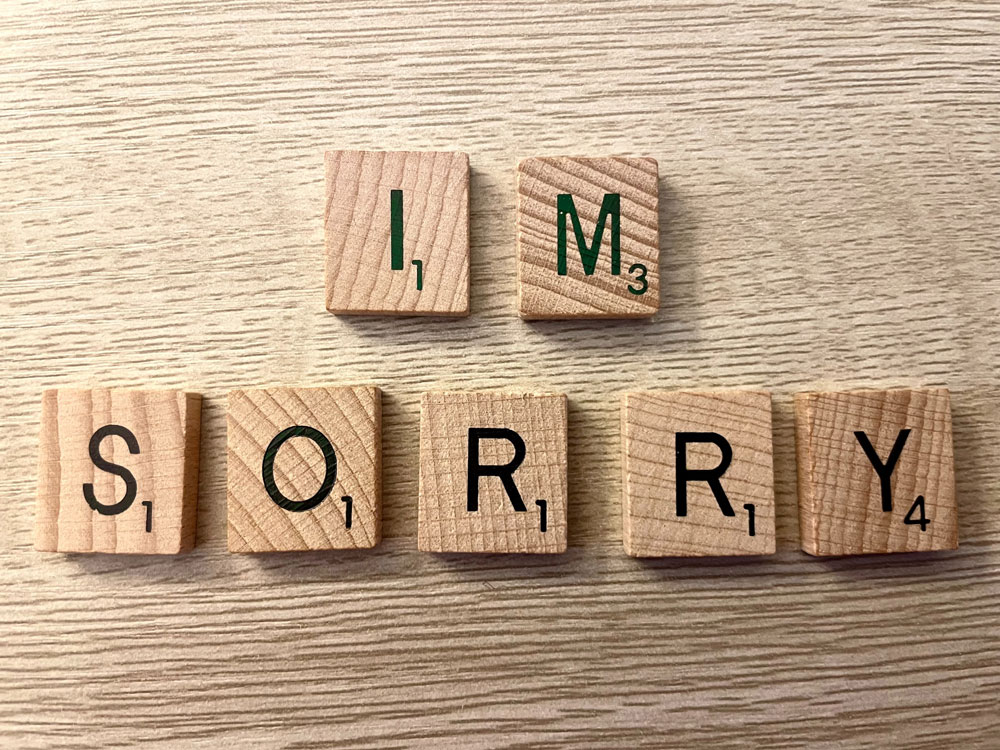It is said that apologies can’t change the past but can change the future. That achievement requires one indispensable ingredient: authenticity.
There are two words, two tiny but powerful words that can instantly drain all genuineness from any apology and render it useless.
If
Using the word “if” in an apology introduces doubt, ambiguity and insincerity. It suggests that we’re unsure if our actions or words caused harm and implies that the other person is to blame.
Most of the time using “if” is a passive-aggressive attempt to shift the blame and invalidate the position and feelings of other people. Chronic “if” users tend to be people who believe they’re always right, refuse to hold themselves accountable for their actions, and see themselves as victims.
Quick Fix
Instead of saying, “I’m sorry if,” try replacing it with “I’m sorry for.” This revised statement acknowledges the effect of your actions, conveying genuine remorse.
Lasting Fix
Regardless of the situation, take responsibility for your part in it. Apologize, and mean it.
But
The word “but” can negate or diminish the authenticity of an apology because it’s usually used to deflect responsibility and shift blame. When people say “but” after expressing remorse, they’re trying to justify their behavior.
For example, saying: “I’m sorry, but you shouldn’t have done that” pretty much means that you’re not sorry.
While providing context for your actions can be helpful, saying: “I’m sorry, but I’m having a bad day” could be better expressed without the “but.” Instead, you could say: “I’m feeling a lot of stress today [you may or may not specify why], and I’m sorry I was rude to you.” Depending on how harsh your behavior was, other people are more likely to accept your apology when they learn that you’re going through a difficult time and acting out of character.
Quick Fix
Be mindful of every word you use in an apology and steer away from “but.”
Lasting Fix
Focus on taking full responsibility for your actions without adding qualifying statements.
How To Apologize
We now know how not to apologize, now let’s find out how to give an authentic apology.
1. Acknowledge and Accept Responsibility
We now know how not to apologize, now let’s find out how to give an authentic apology.
2. Express Genuine Remorse
Communicate that you understand the hurt or distress you caused. Let others know that you genuinely regret your behavior and that you’re committed to learning from your mistakes.
3. Use Empathetic Language
Put yourself in the other people’s shoes and try to understand their perspective. Use phrases such as “I can imagine how you feel” or “I understand how my actions affected you” to validate their emotions.
4. Offer Amends and Take Action
Ask what you can do to rectify the situation and repair the damage caused.
Final Word
The only way to truly apologize is to mean it. Tap into your self-awareness, identify what you did that led to or contributed to a conflict, take responsibility for it, and say you’re sorry while avoiding “if” and “but” like the plague.
And remember: an apology is a chance to change the future.



